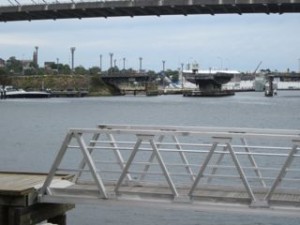Glebe Island Bridge

In November 2013, the NSW Minister for Heritage approved a recommendation from the NSW Heritage Council that the Glebe Island Bridge be placed on the State Heritage Register. The Glebe Society now urges the Government to formulate and implement a Heritage Conservation Plan for the conservation and ongoing sympathetic management of the bridge.
The Glebe Society strongly affirms the necessity to preserve this asset. Apart from its intrinsic value as a part of the history and heritage of the inner-west, the bridge has enormous potential as a pedestrian and cycle route whilst preserving orderly maritime access to the bays precinct. Sydney cannot afford to lose a potential solution for easing traffic congestion.
The Glebe Estate
The Glebe Estate comprises the St Phillips and Bishopthorpe estates originally owned by the Church of England. The Estate covers 19 hectares, located at the western end of Glebe and contains some of the suburb’s earliest buildings. The Glebe Estate was acquired by the Commonwealth Government in 1974, and in 1985 was transferred to the NSW Department of Housing.
The Glebe Estate project, which involved the repair of houses and the installation of modern conveniences, was the oldest, largest and most important urban renewal project undertaken at that time in Australia. It subsequently served as a model for other cities, most notably in Bologna, Italy.
The Glebe Estate and its current parlous condition continues to concern this Society. The Glebe Estate and its residents are an important part of Glebe life and we have an obligation to do all we can to ensure that the heritage infrastructure is appropriately and adequately maintained and to support the continuing wellbeing of its residents.
More information:
See Glebe Society Bulletins, Nos. 1, 2 and 4 of 2013, via the Glebe Society website (go to Publications and follow the links).
Heritage and our heritage streetscapes
Glebe and Forest Lodge are almost entirely urban conservation areas, and were among the first to be so designated by the National Trust. Conservation areas should be explicitly protected by any State Planning legislation, and any development in those areas should be assessed strictly on their merits. Heritage Impact Statements and Environmental Impact Statements should be required.
Items of Environmental Heritage should also be specifically recognised and protected by any State Planning legislation. All the powers of the Heritage Council of NSW in relation to items listed on the State Heritage Register should be retained.










There are no comments yet. Please leave yours.